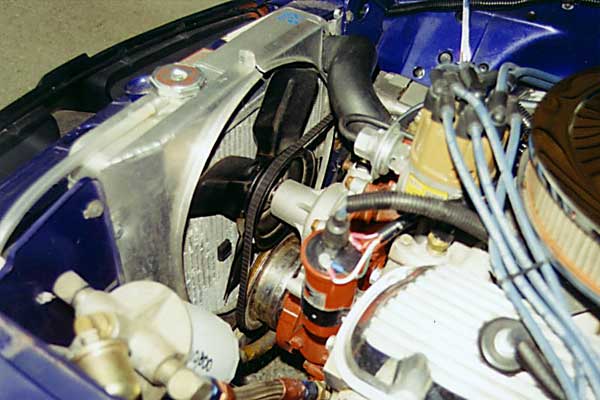Offline
There are a couple of guys that have done it and published articles.
https://www.stevesaustinhealey.com/blog/9-ac-installation?showall=
Also September 2015 Healey Marque
The Healey version of the Manhattan Project!
 Hi Guest!
Hi Guest!

 smilie in place of the real @
smilie in place of the real @
 Pretty Please - add it to our Events forum(s) and add to the calendar! >> Here's How <<
Pretty Please - add it to our Events forum(s) and add to the calendar! >> Here's How << 
There are a couple of guys that have done it and published articles.
https://www.stevesaustinhealey.com/blog/9-ac-installation?showall=
Also September 2015 Healey Marque
Thanks for the input, I've given that some thought. What my initial test makes me think though, is that when fans are not against the radiator the air would take the path of least resistance and be deflected by the radiator and perhaps out the grill if not moving.....
I bring this up because if I were to address your issue, I would favor installing a similar low mounted scoop under a few inches behind the bottom of the shroud with 2 upward facing fans. This would allow uninhibited air flow through the grill to allow cooling at speed (as apposed to many who have found the constant running of an electric pusher fan mounted on the cross braces that block grill air flow at speed).
Just my thoughts,
Ray(64BJ8P1)
John,
Would it be possible to repost them at a larger size? I click on them to read them and they don't blow up at all.
...
One minor comment - what about pop-riveting the side assemblies together?
Not quite clear from the drawings - does the rear piece fold over for the two top pieces on either side of the curved fan guard?
Good Catch!!can upper radiator hose get thru?
My Texas Kooler fan has worked fine up to 105F. Beyond that the people overheat. I just noticed that although the fan blows a lot of air, very little of that air comes through the radiator at idle.The best solution we have found up here in the high desert. Is to install pusher electric fan in front of radiator, and add a 15 inch stainless steel 5 blade fan. /And space it as close as you dare to radiator! Works well, and maintains oem looks.
Hi John,
Does your shroud incorporate panels blocking off radiator areas outside the circumference of the fan opening? I bring this up because of your comment about observing little or no radiator flow-through at engine idle. Forcing all air to flow through the area covered by the revolving fan would give greater air flow and even with some radiator air recircl

I’ve been told that it’s important for the fan blade to stick out from the shroud like this, half way out or there’s problems with turbulence which decreases the cooling performance.John,
You may be right but here is an example of an enclosing radiator fan shroud that seems to provide substantially better flow over the full radiator. The difficulty I see is the area needed to allow full under-shroud flow across the radiator core. Additionally, it definitely looks non-standard.

Dale Spooner's 1977 MGB with Ford V8.
According to Dale, "Fan shroud improves idle and low speed cooling".
Just my thoughts,
Ray(64BJ8P1)
John,
You may be right but here is an example of an enclosing radiator fan shroud that seems to provide substantially better flow over the full radiator. The difficulty I see is the area needed to allow full under-shroud flow across the radiator core. Additionally, it definitely looks non-standard.
Dale Spooner's 1977 MGB with Ford V8.
According to Dale, "Fan shroud improves idle and low speed cooling".
Just my thoughts,
Ray(64BJ8P1)
I’ve been told that it’s important for the fan blade to stick out from the shroud like this, half way out or there’s problems with turbulence which decreases the cooling performance.
